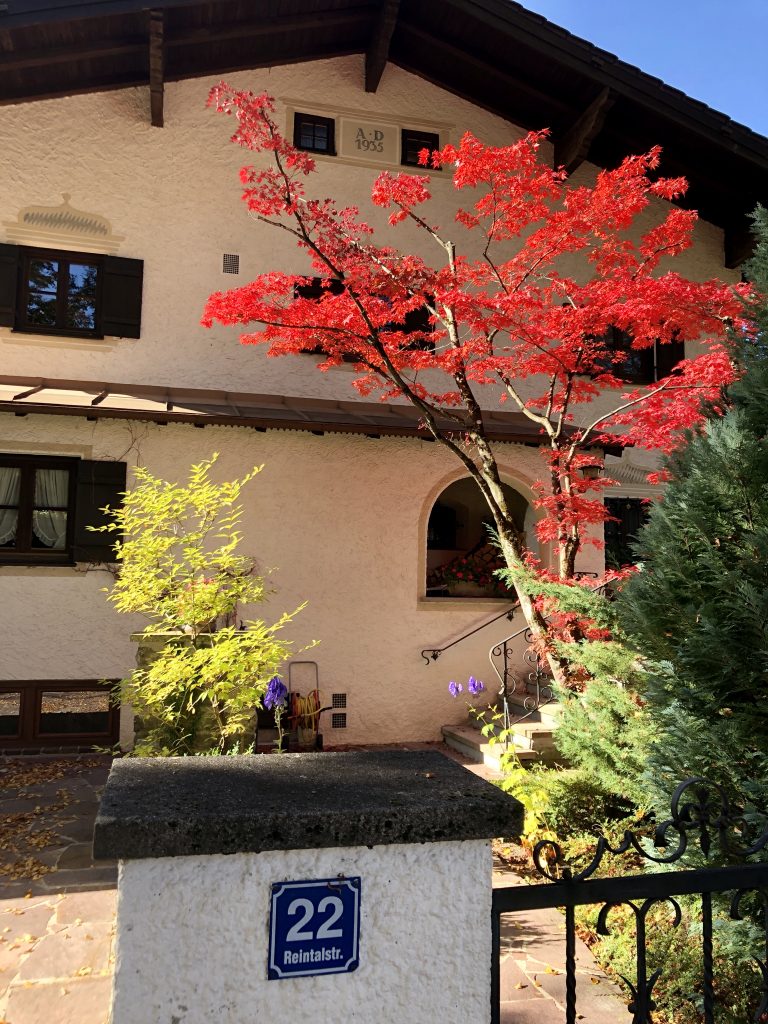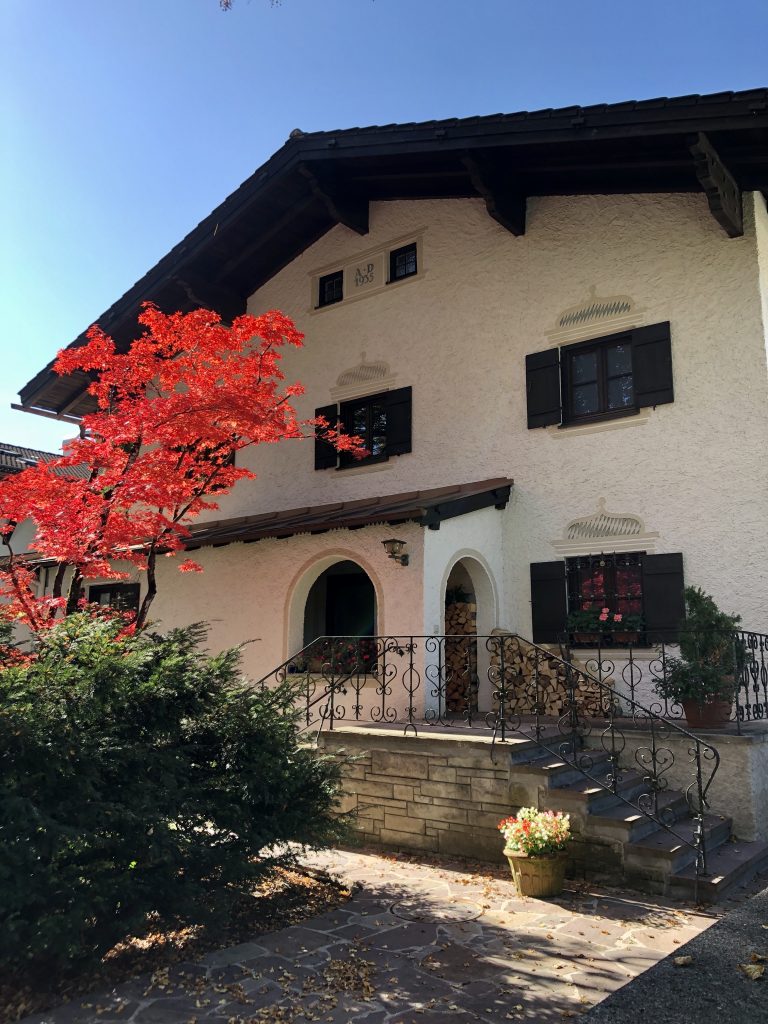Reintalstraße
Reintalstraße 2.
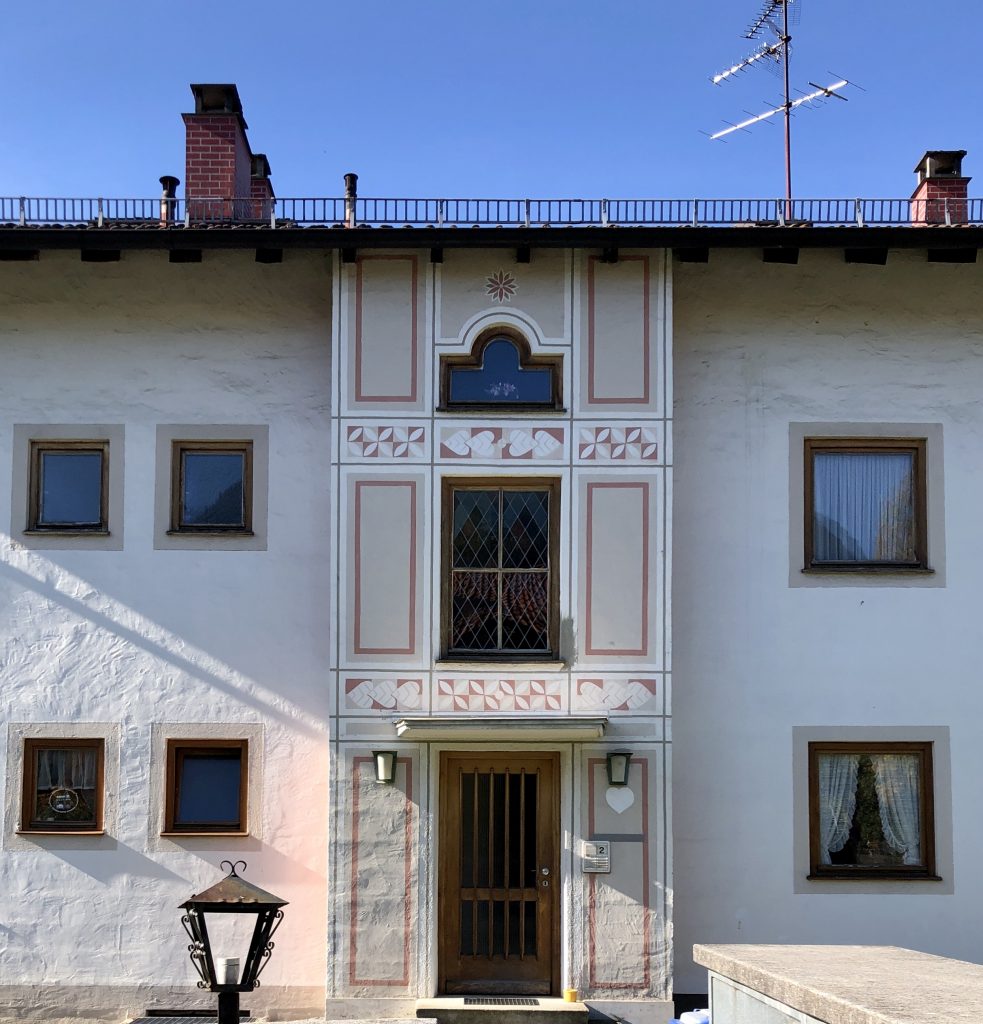
Reintalstraße 7.
Sundial.
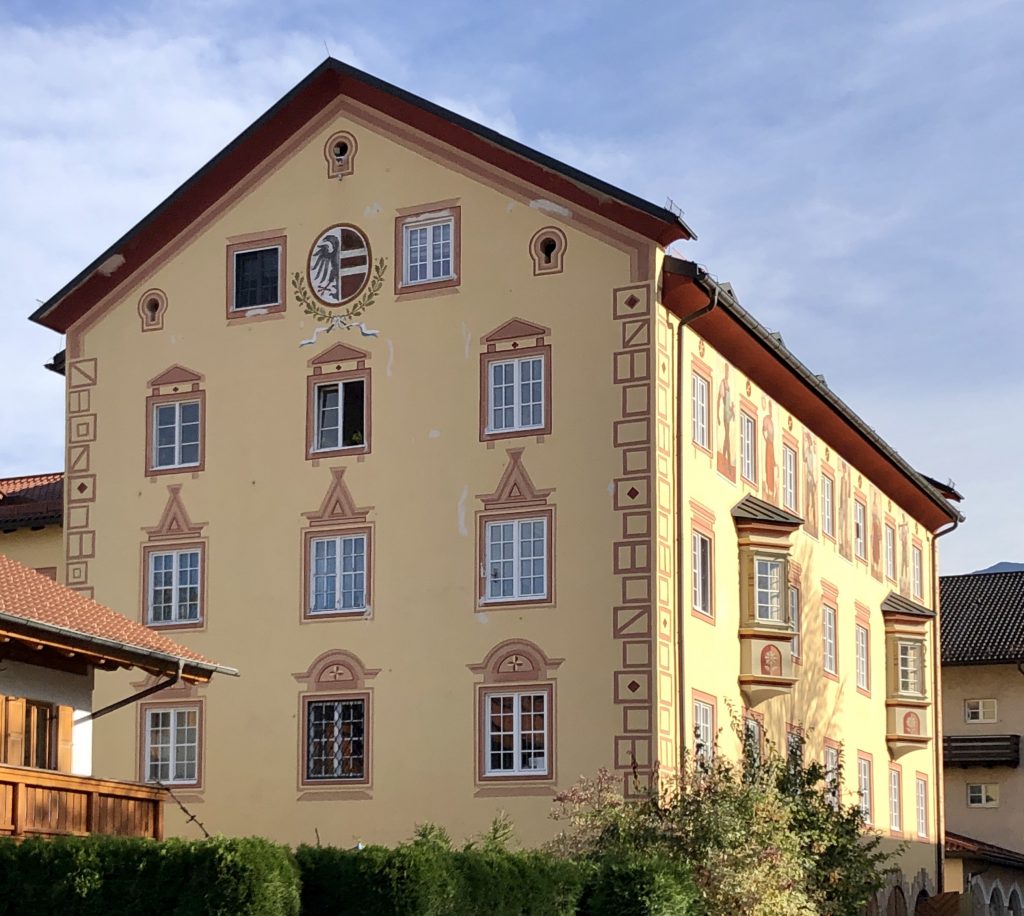
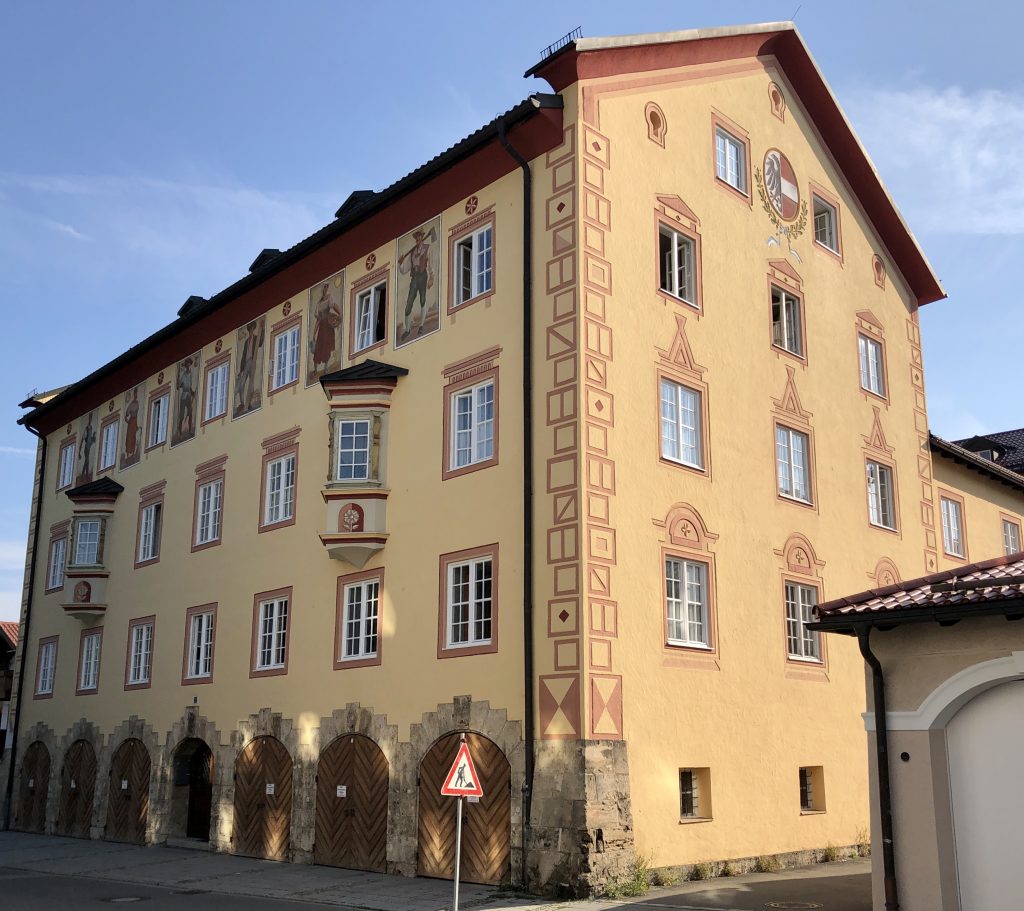
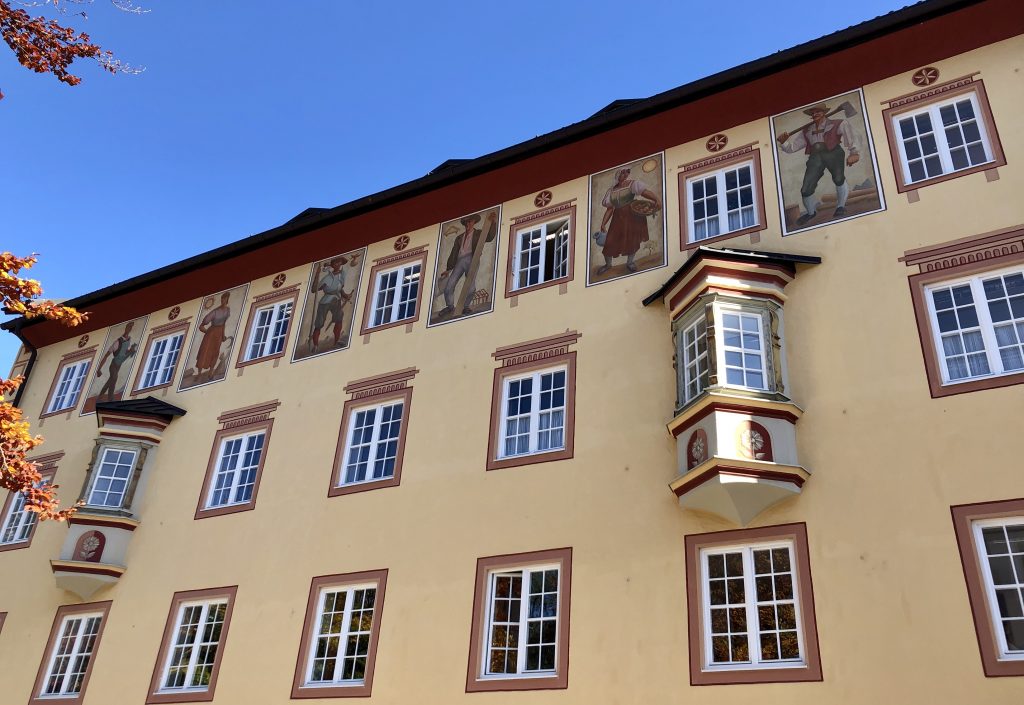
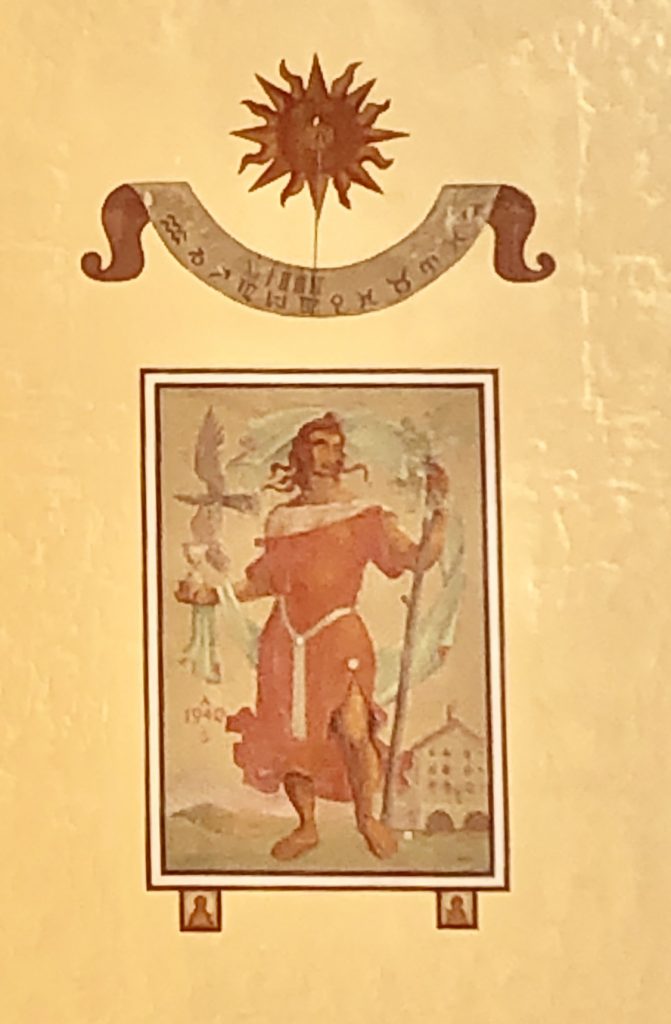
Reintalstraße 9, Landhaus Eugenie, named for Saint Eugenia.
On the front, a lüftlmalerei of the Madonna and child, while on the side, one of Saint Eugenia, both painted by Heinrich Bickel, 1934.
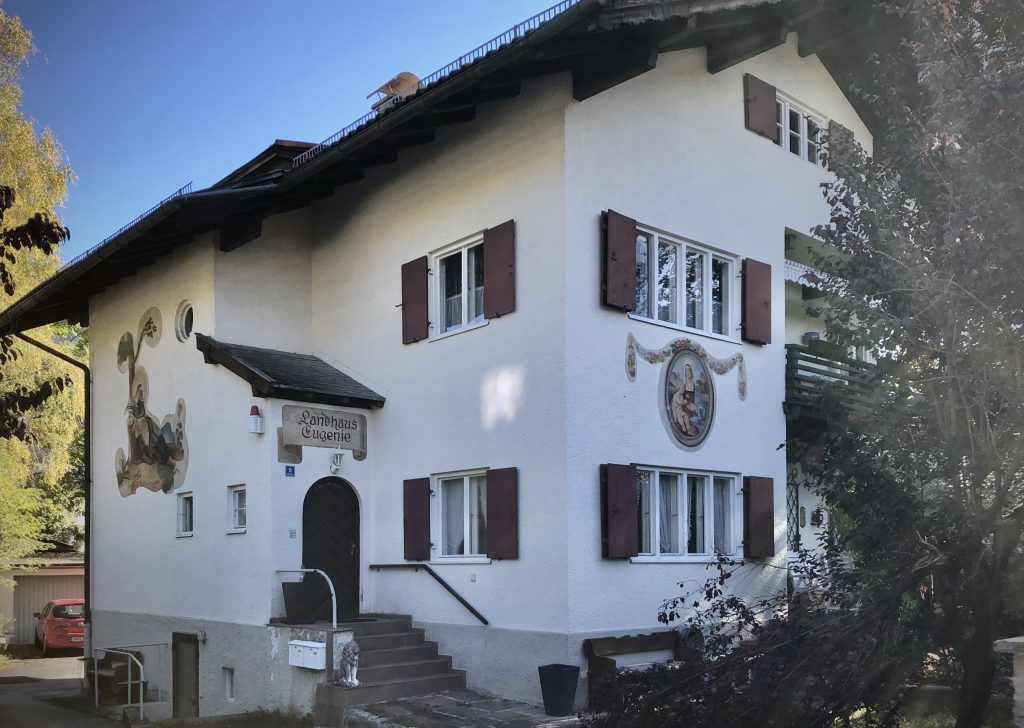
Saint Eugenia was an early Christian Roman martyr, and one of the first Catholic feminists, whose feast day is celebrated on the anniversary of her martyrdom by beheading on December 25, 258. A Roman by birth, she grew up in Alexandria, where her father Philip was sent by the Roman emperor Commodus to be Prefect of Egypt.
Eugenia was not born a Christian, but was converted in her youth without the knowledge of her parents, who were strongly opposed to the new religion. When it came time to screen suitors for the inevitable marriage, one of convenience for the aristocracy, Eugenia slipped away, accompanied by a pair of faithful servants, Protus and Hyacinthus, disguised in men’s clothes.
She and her companions were baptized at a monastery by a bishop, who blessed her to pursue asceticism at the monastery disguised as a monk, a man named “Eugene,” which means “noble” in Greek.
She later became an abbot, still pretending to be a man. Legend has it that she could miraculously heal people.
One version of her story says that while she was working as an abbot and still dressing like a man, she cured a woman of an illness, and when the woman made sexual advances, which she rebuffed, the woman accused her publicly of rape and adultery. The saint was taken to court, where, still disguised, she faced her father as the judge. At the trial, her real identity was revealed and she was exonerated. She, her family, and her servants ultimately moved to Rome, where she worked to convert young women to Christianity.
As the legend of her martyrdom goes, Roman Emperor Galienus sentenced the Saint and her servants to death.
When the soldiers dragged Protus and Hyacinthus into a temple to make them sacrifice to the idols, the idol fell down and were shattered. Thereafter, Protus and Hyacinthus were beheaded.
When they then brought Saint Eugenia to the temple of Diana by force, she had no sooner set foot in the temple when it collapsed.
They then threw Saint Eugenia into the Tiber river with a stone about her neck. But the stone came untied. They tried to set her on fire, but she remained unscathed. Then they cast her into a pit, where she remained for ten days. During that time, she had a vision of Jesus, who told her that she would enter into the heavenly Kingdom on the day He was born.
On December 25, she was pulled from the pit, and an executioner finally put her to death by cutting her head off with a sword.
Here, Bickel depicts the Saint wearing a nun’s habit — rather than a male monk’s robe — tied to the trunk of a tree.
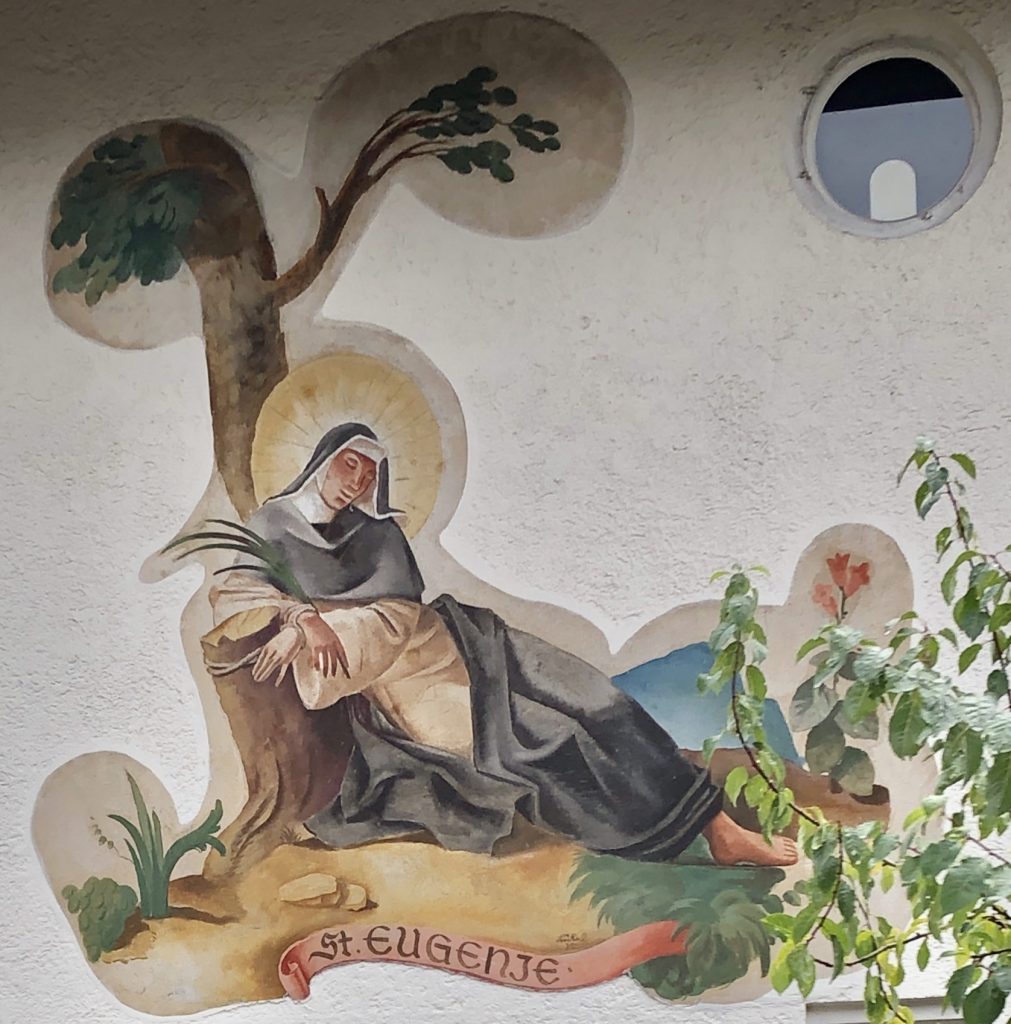
Reintalstraße 22.
